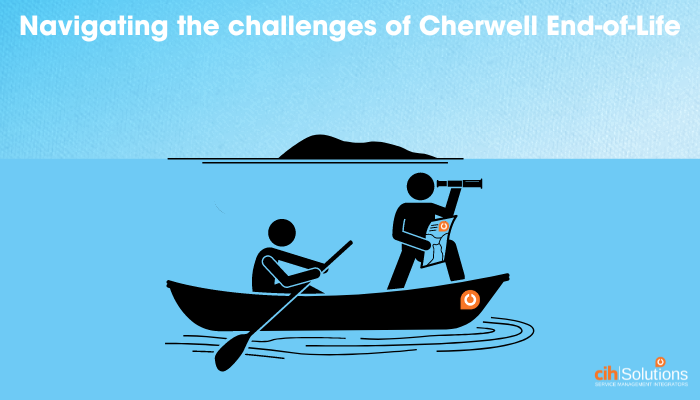If you’re a Cherwell user, you’ll be acutely aware that Ivanti, who acquired the platform in 2021, is planning to discontinue it from 2026. That will leave you with no choice but to migrate to another system, whether that’s Ivanti itself or an alternative option.
Here are five of the most important questions you need to consider when working out your next steps:
1. How long have you had Cherwell – and what have you done with it?
It’s safe to assume that if your organisation purchased Cherwell, it would have done so because it’s a highly configurable system. Therefore, you’re likely to have highly configured it! This may be, for example, to suit your specific business requirements or, depending on how long ago you bought it, to align with other toolsets.
If that sounds familiar, there’s a good chance that layer upon layer of configuration means your system will now be effectively built on sand and was kept ticking along by one or more staff members.
2. How many people have touched the system?
This could include in-house colleagues, third-party partners, and Cherwell itself. For example, it’s common for businesses to have used Cherwell for the initial implementation, then a partner to implement an update, plus their own development team to handle ongoing configurations.
The likelihood is that at least some, if not all, of the configuration will not have been done with a development mindset. The result will be that a lot of technical debt could have been built into the system over the years, which will need to be unpicked before moving to a new one.
3. Do you have full documentation?
The more people who have touched the system, the more likely it is that you won’t have any documentation that details the multiple configurations. We often encounter clients who are unsure about many features in the system—including whether they are ever used or not or even why they’re there in the first place.
Suppose this kind of information has been residing in people’s memories, and those people have left the organisation over the years due to personnel changes. In that case, unravelling everything will likely be a significant challenge.
4. Do you know what you want to keep?
Even if you do have an idea of what your current system does and how it’s been configured, do you have clarity on what features you want (or need) to hold onto when moving over to a new system?
This is a crucial question to answer, as whatever new system you choose, you’re effectively going to be doing a new implementation – and the old adage of ‘rubbish in, rubbish out’ holds as true as ever.
There is likely to be a need for process design, data review, service cataloguing, and so on. However, your new system might not support everything you did previously with Cherwell, or at least not in the same ways – making a straight ‘lift and shift’ practically impossible.
5. Has your Cherwell system found its way into other areas of the business?
Cherwell was always designed to be expandable, so there’s a strong possibility that your organisation is using it in functions other than IT service management – for example, in enterprise service management (ESM), HR, and so on.
If that’s the case, you’ll need to think hard about whether your new system can support similar functions, or if you’ll need another solution to pick up that additional functionality. Many vendors might claim that their platforms can do whatever you may require, but that may only be in a specific way that might not be appropriate for your organisation.
Finding the right solutions
As you may have realised by now, if you don’t proceed carefully, all of this could amount to a whole heap of trouble for your business. However, with the right advice from professionals with in-depth expertise, all these issues can be handled effectively.
Here at CIHS, we have decades of experience of managing migrations and implementations across multiple ITSM platforms and can support you with your Cherwell end-of-life issues.
In particular we can offer:
• A standard ITSM assessment, where we’ll review not only your existing toolset, but any integrations or accompanying toolsets. This can then help you work out your roadmap as you move forwards.
• A full technical review that would, for example, run through every part of your system and document it on a discipline-by-discipline basis. This would then form the basis of your user requirements for the replacement system.
• Support with creating RFPs for your replacement system.
• Advice on selecting the replacement system that aligns most effectively to your requirements.
• Support with implementation and integration of your new system.
For help with any of the above or just a no-strings conversation about how we might be able to support you with your Cherwell end-of-life challenges, get in touch now.


